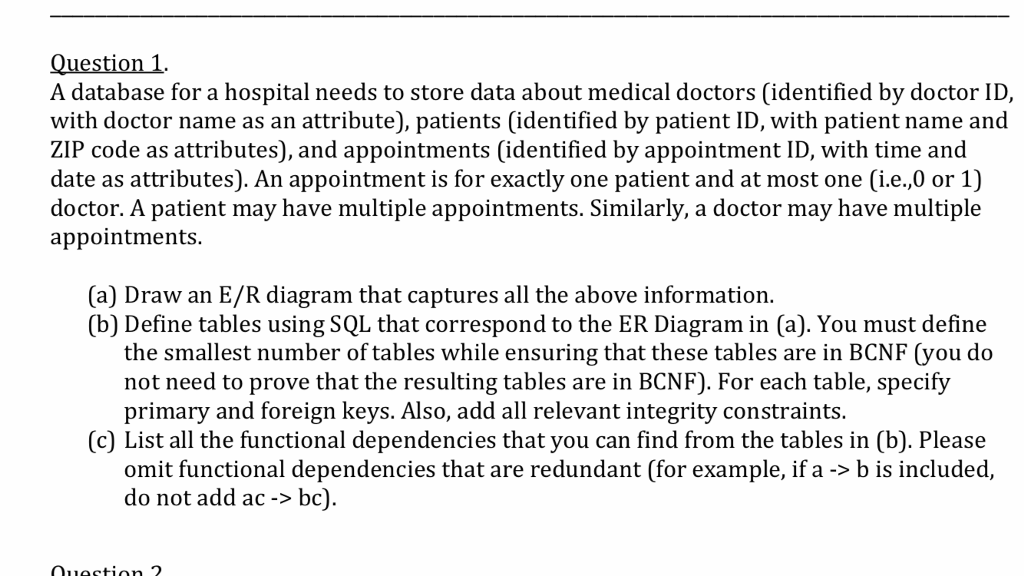Q1 part C please

Question1. A database for a hospital needs to store data about medical doctors (identified by doctor ID with doctor name as an attribute), patients (identified by patient ID, with patient name and ZIP code as attributes), and appointments (identified by appointment ID, with time and date as attributes). An appointment is for exactly one patient and at most one (i.e.,0 or 1) doctor. A patient may have multiple appointments. Similarly, a doctor may have multiple appointments (a) Draw an E/R diagram that captures all the above information. (b) Define tables using SQL that correspond to the ER Diagram in (a). You must define the smallest number of tables while ensuring that these tables are in BCNF (you do not need to prove that the resulting tables are in BCNF). For each table, specify primary and foreign keys. Also, add all relevant integrity constraints (c) List all the functional dependencies that you can find from the tables in (b). Please omit functional dependencies that are redundant (for example, if a -> b is included, do not add ac-> bc) Question1. A database for a hospital needs to store data about medical doctors (identified by doctor ID with doctor name as an attribute), patients (identified by patient ID, with patient name and ZIP code as attributes), and appointments (identified by appointment ID, with time and date as attributes). An appointment is for exactly one patient and at most one (i.e.,0 or 1) doctor. A patient may have multiple appointments. Similarly, a doctor may have multiple appointments (a) Draw an E/R diagram that captures all the above information. (b) Define tables using SQL that correspond to the ER Diagram in (a). You must define the smallest number of tables while ensuring that these tables are in BCNF (you do not need to prove that the resulting tables are in BCNF). For each table, specify primary and foreign keys. Also, add all relevant integrity constraints (c) List all the functional dependencies that you can find from the tables in (b). Please omit functional dependencies that are redundant (for example, if a -> b is included, do not add ac-> bc)







